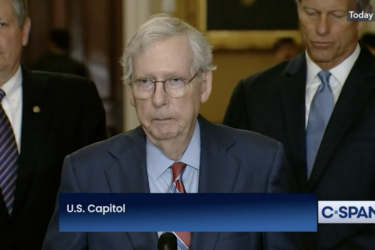
Want to stay healthy as you age? Move to Minnesota. Or perhaps Hawaii. These states rank number one and two in a new report on the health status of women. Minnesota was tops in the nation with an “A-“ on a composite index of women’s health and well-being, according to research compiled by the Institute for Women’s Policy Research.
The North Star State has the lowest female mortality rate from heart disease and ranks in or near the top ten almost all of the other nine component nine indicators covering chronic disease, sexual health, mental and physical health.
States in the South have the lowest composite scores on women’s health status. Alabama, Arkansas, Kentucky, Louisiana, Mississippi, South Carolina, Tennessee, and West Virginia were rated most poorly, with grades of “F” or “D-.”
Mississippi was number 51 out of all places in the nation for women’s health. It was ranked worst for mortality from heart disease, and had the second to worst ranking on the percentage of women with diabetes. The state also ranks in the bottom ten for mortality from breast cancer, the average number of days per month on which health status limited women’s activities, incidence of AIDS and chlamydia, and poor mental health. The District of Columbia and Oklahoma are also in the bottom ten.
While multiple factors shape women’s health, environment, socio-economic status, and access to affordable health care strongly influence healthy aging. (See this tip sheet from Eileen Beal on other factors that influence healthy aging). Older women are also more likely to have at least one chronic condition and limits on activities of daily living. According to the American Heart Association, heart disease is the leading killer of older women, as it is for women of all ages.
Other findings from the report include:
- Slightly less than half (47.8 percent) of older women in the U.S. (65+) report getting least 150 minutes of physical activity per week outside of their jobs, a similar proportion to women overall (48.2 percent) but a lower proportion than older men (55.1 percent).
- Older women in Oregon are the most likely to get this amount of exercise (62.2 percent), and older women in Mississippi are the least likely (30.8 percent).
- Sixty percent of older women are overweight or obese, compared with 72.1 percent of older men and 57.6 percent of women overall.
- It’s as high as two thirds of older women in Louisiana (65.8 percent) and in Michigan.
- In Hawaii, the state with the smallest proportion, fewer than half of older women (44.4 percent) are overweight or obese
- One in five women aged 65 and older in the United States (19.8 percent) report having diabetes.
- Incidence is highest in Mississippi (24.6 percent), South Carolina (23.9 percent), and Georgia (23.6 percent); it is lowest in Colorado (14.2 percent) and in Montana and Vermont (14.8 percent each).
- Among Medicare beneficiaries, older women have higher expenses than older men, with the difference in out-of-pocket expenses the largest among women and men aged 85 and older ($7,555 for women and $5,835 for men), according to data from the Kaiser Family Foundation.
- The average out-of-pocket expenditures for older women who receive Medicare increase with age, meaning that the highest expenditures come as some women’s financial resources are becoming more limited or depleted.
The report also looks at improvement or decline in women’s health status among these indicators in recent years, and highlights those places where women’s health status varies by race/ethnicity and age as well as those who identify as a LGBT.
Check out this interactive map to find out how your state performs on any or all of the nine health indicators for women.
Here are some ideas for stories:
- Reporters can use any or all of the data as the basis for stories on policy, health disparities, funding, access, or the effects of Medicare reimbursement, among other ideas.
- Speak with policy experts, care providers, advocates and women in these age groups to find out how they interpret the data, and whether or how they plan to address it.
- How do the provisions of the Affordable Care Act come into play? What about states where there is no Medicaid expansion? What is the difference between urban and rural, ethnicity and income?
- Look at how states improved or declined from previous years. Why?









